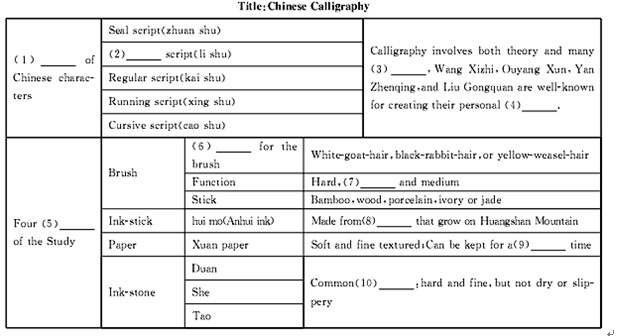阅读理解。
More than one in ten UK teenagers has been left without a job or college place, despite 11 years of
compulsory education, figures show.
The number of 16-t0 18-year-olds branded as "Neet"-not in education, employment or training-has
risen amid growing fears that school-leavers are bearing the brunt of job shortages in the recession.
Some 261,000 young people had no job or training place, according to official data. The figure rose
to 1,082,000 among 16-to 24-year-olds.
The Conservatives branded the figure "shocking".
David Willetts, the shadow skills secretary, said:"It is a damning indictment of the Government's
failure to help young people during the recession."
"Despite all Cordon Brown's guarantees and pledges, the number of young people neither earning nor
learning is increasing at a rate of more than 9,000 a week. Ministers must stop making empty gestures
that do so little to help young people."
The Government has a target to reduce the proportion of young Neets to 7.6 per cent by next year.
The latest annual data from the Department for Children, Schools and Families put the figure at 10.3
per cent by the end of 2008.
The percentage of 16-t0 18-year-olds who fall into the same bracket remained higher in the past year
than in the previous 12 months, it was revealed.
"In a further disclosure, figures for the third quarter of this year show almost a fifth of 16 to 24-year-
olds were in the category-more than at any point since 2005.
Iain Wright, the Schools Minister, said:"We are giving all l6 and 17-year-olds the opportunity to stay
in education or training so they can gain the skills they need to succeed in an increasingly competitive
labour market."
"We must not repeat the mistakes that were made in recessions of the past and abandon a whole
generation of young people. We recognize that we need to carry on helping young people through this
tough economic climate."
He said the Government would offer every Neet 16 and 17-year-old a place on an "Entry to Employment"
course in January.
1. According to what David Willetts said, the number of young people neither earning or learning will increase
____ in a year.
A. 261,000
B. 1,082,000
C. 9,000
D. 432,000
2. The author develops the passage mainly by ____.
A. providing typical examples
B. telling an interesting story
C. comparing opinions from different fields
D. presenting a problem and possible solutions
3. What David Willetts said indicates that ____.
A. the government has tried its best to solve the problem
B. the problem is unavoidable during the recession
C. what the government has done is far from satisfactory
D. he is sure the government can solve the problem
4. Which of the following is NOT true according to Iain Wright?
A. The government has realized how serious the problem is and will take effective measures.
B. Young people are facing a tough economic climate.
C. The government responded too late in face of the situation.
D. It will be difficult for young people to be employed if they don't have relevant skills.

 赢在课堂名师课时计划系列答案
赢在课堂名师课时计划系列答案 天天向上课时同步训练系列答案
天天向上课时同步训练系列答案 阳光课堂同步练习系列答案
阳光课堂同步练习系列答案